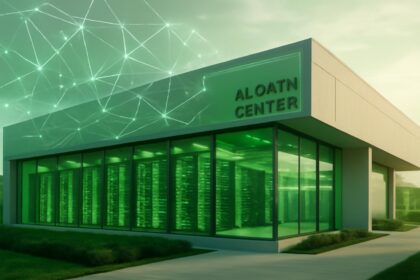Nvidia’s $100 Billion Investment in OpenAI Focuses on AI Compute Infrastructure
Nvidia has unveiled a landmark investment in OpenAI, committing up to $100 billion to support the AI startup’s expansion of supercomputing capabilities. This investment, announced in September 2025, will be deployed incrementally as OpenAI’s AI data centers become operational over the coming years, with the first facility scheduled to open in the latter half of 2026. While the total figure is staggering, the bulk of these funds will be directed toward leasing Nvidia’s advanced graphics processing units (GPUs), which are critical for training and operating large language models and other AI workloads.
Leasing Nvidia GPUs: Spreading Costs Over Time
OpenAI will primarily finance its use of Nvidia’s GPUs through lease arrangements rather than outright purchases, according to sources familiar with the agreement. This structure allows OpenAI to distribute GPU costs over their useful life, estimated at up to five years, reducing upfront capital expenditures while shifting some operational risk to Nvidia. Nvidia CEO Jensen Huang described the deal as “monumental in size,” estimating that a single AI data center with a gigawatt of capacity costs approximately $50 billion, with $35 billion allocated to Nvidia GPUs. By leasing rather than buying, OpenAI can manage cash flow more efficiently during its rapid expansion.
Financial Strategy Amid Costly Expansion
Despite the sizable equity investment, OpenAI remains a non-investment-grade startup without positive cash flow, making financing expensive. Company executives have acknowledged that equity is the costliest method to fund data center growth and indicated plans to supplement funding with debt financing. The leasing model and Nvidia’s long-term commitment may enhance OpenAI’s creditworthiness, potentially securing more favorable loan terms from financial institutions.
Collaborative Efforts with Oracle and Nvidia
At the inaugural OpenAI data center in Abilene, Texas, CFO Sarah Friar highlighted the critical role of partners such as Oracle and Nvidia in financing the infrastructure. Oracle is leasing the Abilene facility, with OpenAI responsible for operational costs.
“Folks like Oracle are putting their balance sheets to work to create these incredible data centers you see behind us,” Friar said. “In Nvidia’s case, they’re putting together some equity to get it jumpstarted, but importantly, they will get paid for all those chips as those chips get deployed.”
Friar emphasized the acute shortage of compute capacity in the market, underscoring that as OpenAI’s business expands, it will be able to finance the increasing demand for compute resources.
Market Concerns Over Financial Circularity and Sustainability
Despite the enthusiasm surrounding the Nvidia-OpenAI partnership, some analysts express caution about the sustainability of the AI sector’s growth. Nvidia’s market capitalization has surged to $4.3 trillion, fueled largely by GPU sales to AI leaders including OpenAI and major tech companies like Google, Microsoft, and Meta. Jamie Zakalik, an analyst at Neuberger Berman, warned that OpenAI’s repeated capital raises, which are then reinvested into Nvidia’s products, create a circular financial dynamic that inflates reported earnings without generating equivalent new value.
“Investors are concerned about the circular nature of this deal goosing up everyone’s earnings and everyone’s numbers,” Zakalik said. “But it’s not actually creating anything.”
Responding to these concerns, OpenAI CEO Sam Altman stressed the company’s focus on building products and services that generate real consumer and business demand, which in turn will fund ongoing data center and compute investments.
“We need to keep selling services to consumers and businesses — and building these great new products that people pay us a lot of money for,” Altman said. “As long as that keeps happening, that pays for a lot of these data centers, a lot of chips.”
FinOracleAI — Market View
Nvidia’s unprecedented financial commitment to OpenAI underscores the escalating demand for AI compute infrastructure and the strategic importance of GPU technology in powering next-generation AI models. The leasing model adopted by OpenAI reflects a pragmatic approach to managing capital expenditures amid an industry-wide shortage of compute capacity.
- Opportunities: Accelerated AI infrastructure buildout supports rapid AI innovation and scaling.
- Leverage: Leasing GPUs reduces upfront costs and financial strain on OpenAI, enabling sustained growth.
- Partnership Synergies: Collaboration with partners like Oracle and Nvidia optimizes resource allocation and financing.
- Market Leadership: Nvidia solidifies its dominant position in AI hardware supply chains.
- Risks: Circular financing dynamics raise questions about long-term value creation and market sustainability.
- Debt Exposure: OpenAI’s reliance on debt financing may increase financial risk amid volatile AI market conditions.
Impact: Nvidia’s investment model, emphasizing GPU leasing, positions both companies to capitalize on soaring AI compute demand but introduces financial complexities that warrant close market scrutiny.













